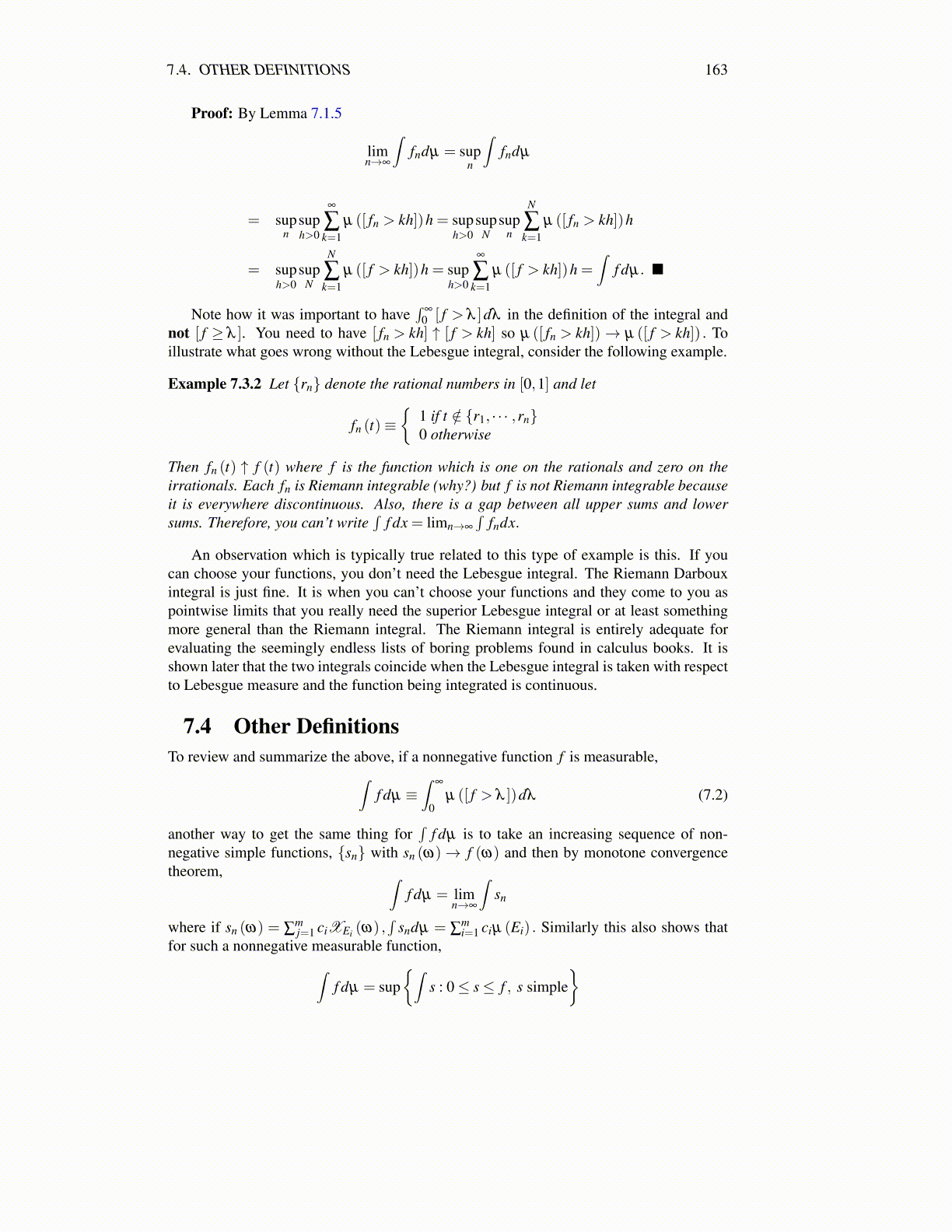
7.4. OTHER DEFINITIONS 163
Proof: By Lemma 7.1.5
limn→∞
∫fndµ = sup
n
∫fndµ
= supn
suph>0
∞
∑k=1
µ ([ fn > kh])h = suph>0
supN
supn
N
∑k=1
µ ([ fn > kh])h
= suph>0
supN
N
∑k=1
µ ([ f > kh])h = suph>0
∞
∑k=1
µ ([ f > kh])h =∫
f dµ. ■
Note how it was important to have∫
∞
0 [ f > λ ]dλ in the definition of the integral andnot [ f ≥ λ ]. You need to have [ fn > kh] ↑ [ f > kh] so µ ([ fn > kh])→ µ ([ f > kh]) . Toillustrate what goes wrong without the Lebesgue integral, consider the following example.
Example 7.3.2 Let {rn} denote the rational numbers in [0,1] and let
fn (t)≡{
1 if t /∈ {r1, · · · ,rn}0 otherwise
Then fn (t) ↑ f (t) where f is the function which is one on the rationals and zero on theirrationals. Each fn is Riemann integrable (why?) but f is not Riemann integrable becauseit is everywhere discontinuous. Also, there is a gap between all upper sums and lowersums. Therefore, you can’t write
∫f dx = limn→∞
∫fndx.
An observation which is typically true related to this type of example is this. If youcan choose your functions, you don’t need the Lebesgue integral. The Riemann Darbouxintegral is just fine. It is when you can’t choose your functions and they come to you aspointwise limits that you really need the superior Lebesgue integral or at least somethingmore general than the Riemann integral. The Riemann integral is entirely adequate forevaluating the seemingly endless lists of boring problems found in calculus books. It isshown later that the two integrals coincide when the Lebesgue integral is taken with respectto Lebesgue measure and the function being integrated is continuous.
7.4 Other DefinitionsTo review and summarize the above, if a nonnegative function f is measurable,∫
f dµ ≡∫
∞
0µ ([ f > λ ])dλ (7.2)
another way to get the same thing for∫
f dµ is to take an increasing sequence of non-negative simple functions, {sn} with sn (ω)→ f (ω) and then by monotone convergencetheorem, ∫
f dµ = limn→∞
∫sn
where if sn (ω) = ∑mj=1 ciXEi (ω) ,
∫sndµ = ∑
mi=1 ciµ (Ei) . Similarly this also shows that
for such a nonnegative measurable function,∫f dµ = sup
{∫s : 0≤ s≤ f , s simple
}